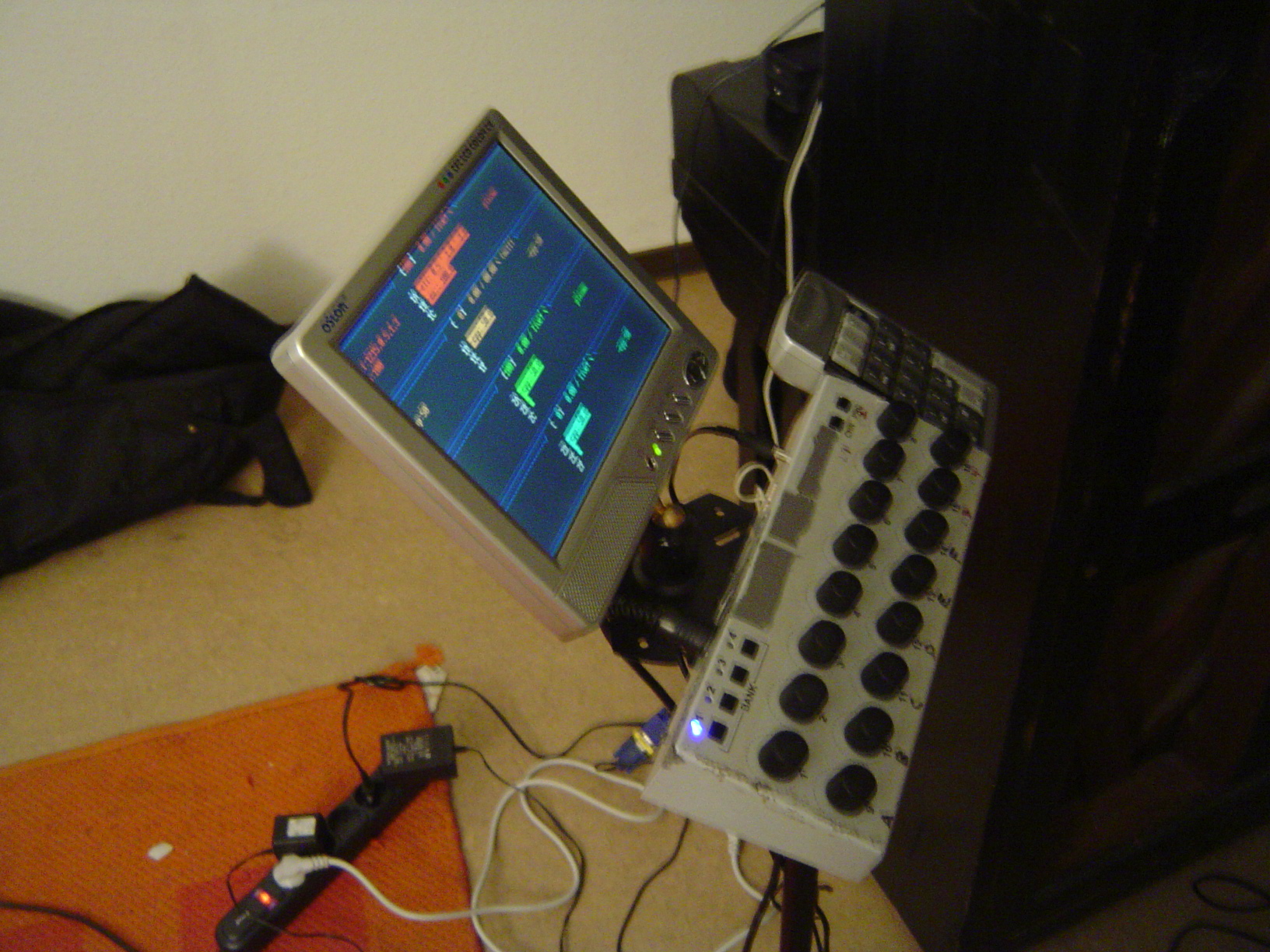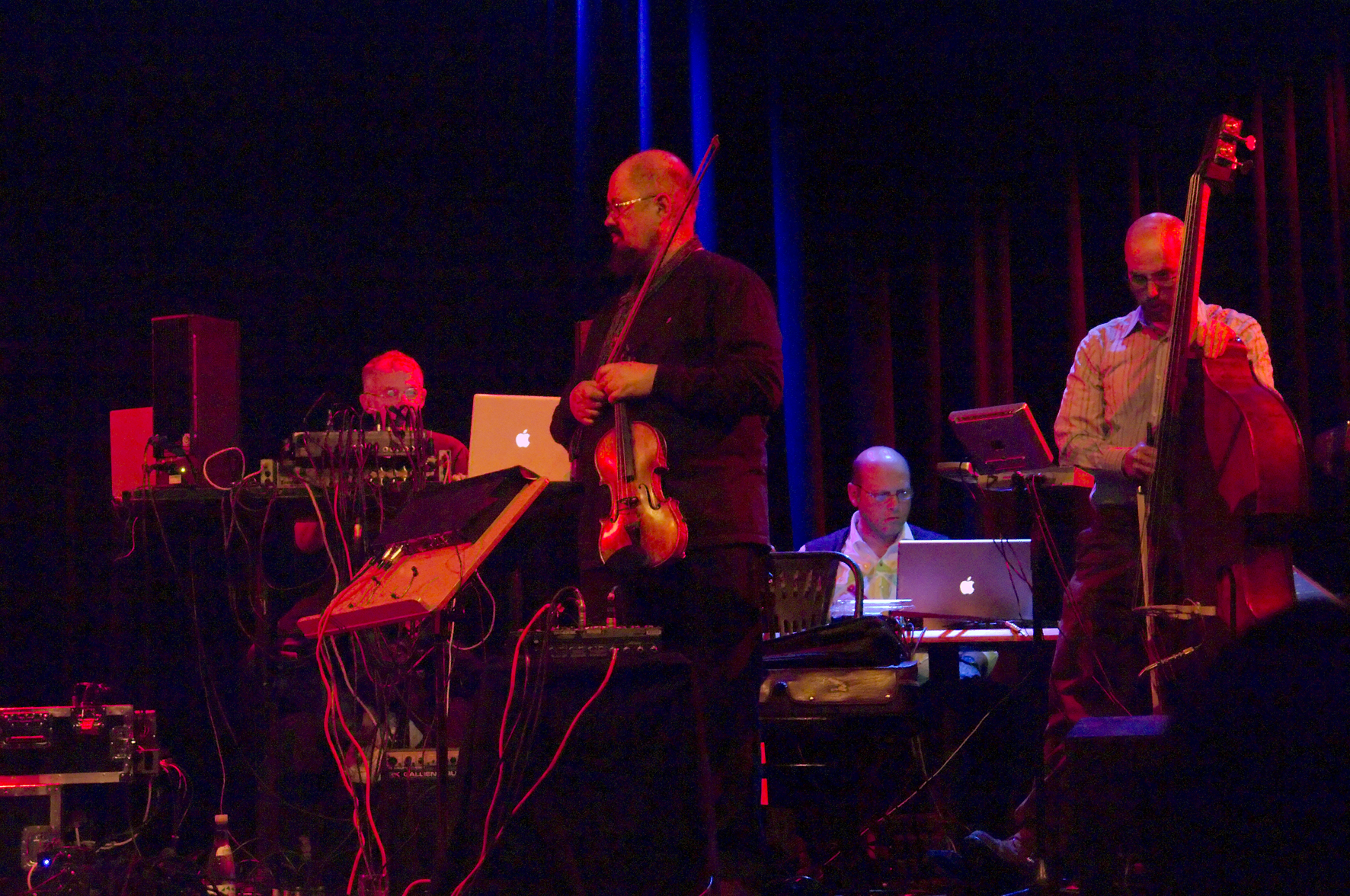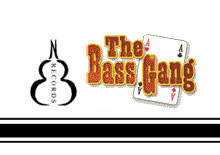Adam Linson: Percent-S' Studio
Berlin. Along the River Spree, on the bank opposite the Jannowitzbrücke station, there is a modern building. On the first floor, we find a small recording studio -- percent-s productions -- established by double bassist Adam Linson.
Adam Linson is from California. He studied under the Maestro Bertram Turetsky, a famous musician and professor, who wrote the book The Contemporary Contrabass. Linson also studied music theory and practice under George Lewis at the University of California at San Diego (UCSD). He has performed with famous musicians in the free-jazz and improvisation world, including Evan Parker – with the Evan Parker Electro-Acoustic Ensemble -, Alex von Schlippenbach trio – of whom Evan Parker himself is a member, as well as with Rudi Mahall, Joel Ryan, Lawrence Casserley, Richard Barrett and Walter Prati. He graduated from UCSD with a degree in Philosophy, specializing in contemporary philosophy. In 1999, Linson moved to the reunited Berlin to learn German while pursuing a career in music.
For some years now he has turned his attention to research into interaction between improvised music and electronic processing. One can say that his studies start from two basic subjects. One is strictly musical. It concerns his interest in the free-jazz tradition (Eric Dolphy, Albert Ayler, Art Ensemble of Chicago, Evan Parker), improvised music and some aspects of contemporary music, such as electro-acoustics. In particular, he draws upon important composers such as Conlon Nancarrow and Luigi Nono, whose works use experimentalism as a means of expressing modern social life. He is also interested in new technologies, in particular digital applications in processing acoustic signals, such as the Voyager software, an interactive program and composition designed by his erstwhile professor George Lewis. Linson's own software is based on the real-time processing and sampling of external sound inputs and their subsequent re-introduction into the players' musical environment. The single musical act is thereby both divided and multiplied.
The second subject is more philosophical, rooted in his research in semiotics and aesthetic criticism. He starts from an evaluation of a representation of an object by media, whose manifestation is mediated by the specific situation and framework. In this sense, the recorded musical product actually contains communicative elements which are not always present in the performance.  They change each time they are heard and this allows considering each performance as objectively unique in its subjectivity. Linson says: "The idea came while studying the films of Godard and Resnais which, for me, are linked to Roland Barthes' discussion of connotation. This is especially relevant today, in that it underscores the fundamental lack of objectivity in mass media." Actually, in the musical field, too, the highest levels reached by the science of digital processing result in products that are often not similar to their objective original recording. Once recorded, the signal can be presented in thousands of ways and shapes, new contexts and atmospheres. "Between the sound's transmission and reception there are so many intervening encoding technologies that the recorded product, assumed to objectively capture a situation, actually reflects a point of view which is mediated by any number of human decisions. For example, a microphone cannot objectively capture a sound. Those involved in the recording process are like translators making decisions about how to best translate a poem into another language. " They change each time they are heard and this allows considering each performance as objectively unique in its subjectivity. Linson says: "The idea came while studying the films of Godard and Resnais which, for me, are linked to Roland Barthes' discussion of connotation. This is especially relevant today, in that it underscores the fundamental lack of objectivity in mass media." Actually, in the musical field, too, the highest levels reached by the science of digital processing result in products that are often not similar to their objective original recording. Once recorded, the signal can be presented in thousands of ways and shapes, new contexts and atmospheres. "Between the sound's transmission and reception there are so many intervening encoding technologies that the recorded product, assumed to objectively capture a situation, actually reflects a point of view which is mediated by any number of human decisions. For example, a microphone cannot objectively capture a sound. Those involved in the recording process are like translators making decisions about how to best translate a poem into another language. "
Starting from these bases, Linson used the free and open-source Ecasound digital recording program to design an application which allows him to pick up the sounds produced by his instrument and process them in real time. In a certain way, it is a live version of the de-objectification process which is already present in the recording session.
Although Linson designed his system for any type of musical instrument and sound source, we must admit that this effect applied to the double bass produces interesting and innovative results. This is thanks to the harmonic spectrum of the double bass. The listener is disoriented, especially if used to the double bass's traditional sound. He is involved in a process of decontextualization and recontextualization that challenges the skills of the performer who is improvising on an ever-changing ground. It also challenges the listener's refined taste, who should catch the compositional impulses throughout this extremely cathartic process in which the actual concept of sound is freed.
This research was documented in the CD Cut and Continuum, published in 2006 by the recording label Psi.t-S.
|






